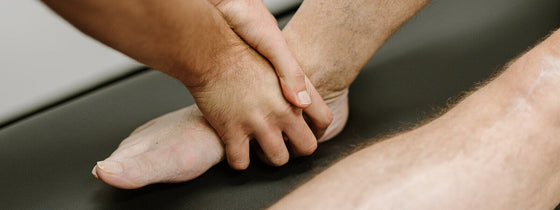OCD is not always what you think, in the context of physio OCD stands for Osteochondritis dissecans a joint condition that commonly occurs in the knees of children and adolescents. Although the complete cause of OCD is unknown OCD occurs when there is a lack of blood flow into the cartilage of a joint hindering bone strength and the cartilage can break loose causing pain and reduced joint motion.
Although here is no clear cause of OCD, it is thought that there are a multitude of factors that can lead to it. Commonly OCD occurs in active children either post-knee injury or after several months of activity following a knee injury. Pain is usually worsened with high-impact activities such as sports, running and jumping and is felt as a dull ache across the front and inside of the knee. Often patients will complain of pain when walking up and down stairs, hills or while playing sports. Sometimes they will have weakness in the knee, giving way and a popping or locking sensation.
The management of OCD varies from person to person based on the severity of the injury and this is usually discussed with a physio in conjunction with an orthopaedic knee surgeon. Conservative management is often trialled first, involving a short rest period, non-weight bearing, activity modification and strength training. However, if this is unsuccessful surgical intervention is sometimes required. Surgery is quite simple and involves pinning the lesion back to the bone to help with healing and improving pain and range of motion.
Post operative management involves a short period of none weight bearing and patrial weight bearing for around 6-8 weeks on crutches, with progressive reloading of the knee in the months following. Range of motion can commonly be restored early in the post operative phase and there is a large emphasis on strength training of the quads, hamstrings, and glutes to enable full support of the knee.
Once strength has been restored and clearance from the surgeon has been given patients can commence gentle biomechanical training in preparation for running, this involves retraining your running gait, improving running technique and preparing your for the rigours of return to sport. Commonly high-impact activities such as jumping, running, and jogging ( AKA the fun stage of rehab!) take around 6 months to commence to allow the lesion and surgery to fully heal. Return to sport can take longer than this, with patients looking at around the 9 months mark for a full high impact return to activities such as football, basketball, or netball. These timeframes often vary from person to person depending upon the level of healing post-surgery and if the fragment re attaches well.
If you or someone you know is suffering from knee pain, an OCD lesion or any other injury, our team of physiotherapists are highly trained to manage these conditions and the post operative phases of recovery. Please get in contact with one of our expert physiotherapy team at OHL to help in getting you back to your optimal health.

If you're experiencing back or neck pain with neurological signs and symptoms, a thorough neurological examination is crucial for accurate assessment and effective treatment. In this Optimal Tip learn more about what we mean by completing a neurological exam!

Squats, deadlifts, and calf raises are key movement patterns that should be part of every strength and conditioning program—regardless of age and activity level. These functional movements support joint health, improve posture and balance, and reduce the risk of injury while building strength where it matters most.

A ganglion cyst is a fluid-filled swelling that typically forms over a joint or tendon sheath, causing discomfort and pain, especially when pressing against nerves or joints. Proper assessment and treatment, including physiotherapy, are essential for managing symptoms and improving function in the presence of a ganglion in your hand, foot, or wrist.